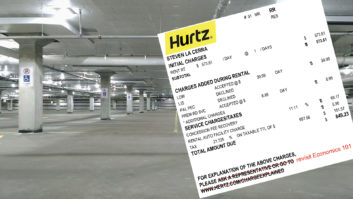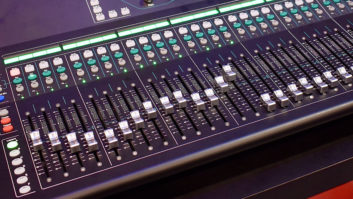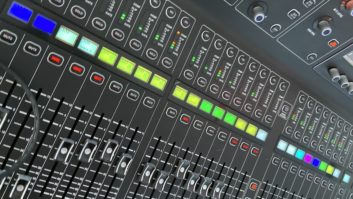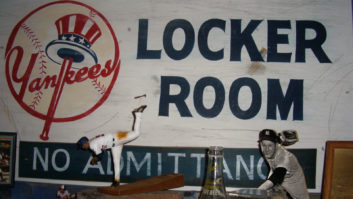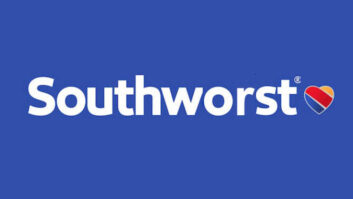One of the interesting things about being on a tour that reaches outside of the United States is that I get to work at venues different from the circuit that forms the basis for our US shows. Not that the US venues are bad—many of them are great—but over the course of a few years, the schedule tends to repeat, with some venues turning up almost like clockwork on a yearly basis.
We’re nearing the end of a run of dates in the UK and Europe which consisted of 12 shows: five in support of Deep Purple and two headlining in the UK; four headlining in France; and one headlining in Brussels. Advancing Euro shows is always a bit of an adventure due to the language barrier. At least two of the venues were unable to furnish tech info in English (!), but fortunately it’s easy enough to recognize brand names and model numbers.
When I received the “Fiche Technique” (technical specs) for a venue called Le Radiant (Caluire-et-Cuire, France), I knew I’d be mixing FOH on a d&b audiotechnik system with four V8 and two V12 line array cabinets flown per side, eight V Sub subwoofers, and d&b Q10, T10 and Y10 fills—all with plenty of horsepower supplied by Lab.gruppen amps. Yamaha CL5s at FOH and monitors rounded out the system.
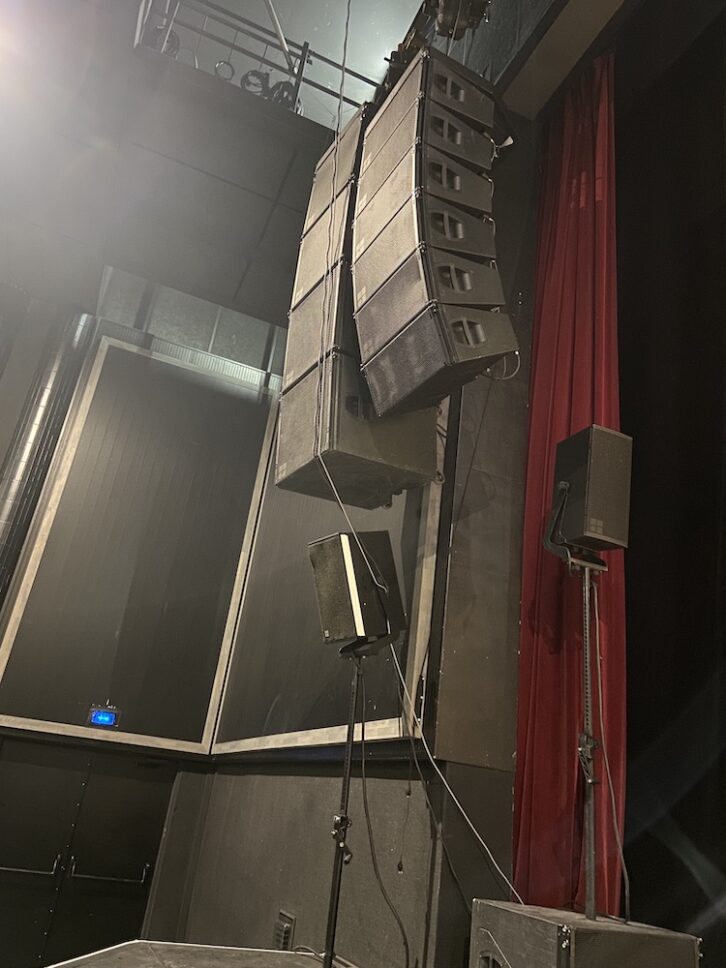
A recent refurb project brought improvements to Le Radiant, including a new facade, movable bleachers in the main performance space, accessible seating, an upgrade to the P.A. system, and a beautiful foyer with floor-to-ceiling glass windows and a new bar. Having come into the venue from the loading area, I saw almost none of this until late in the day—only a rather unassuming room with a gray-painted floor and black walls all around.
I started soundcheck by playing some pre-recorded music through the P.A. and heard a difference in level between the left and right side, with the left being louder. This is not unheard of and usually easily remedied. Maybe there’s an EQ that’s different on one side for some reason or another, or maybe settings on an amp were accidentally changed. I walked the room a bit and when I stood in front of the stage-center mark, the PA sounded perfectly balanced left to right. Maybe the mix position was off-center which again, is hardly unusual.
Mix Live Blog: 50 Years Ago…
I mentioned this to the house audio tech and he immediately offered to move the mix position toward the right side. My gut reaction (“yeah, like that’s going to make a difference”) is seeded in the myriad of venues I’ve mixed where the acoustics are so poor that moving the mix position a few feet to the left or right won’t make a bit of difference. But…since the “mix position” at Le Radiant was nothing more than a couple of portable tables, it was easy enough for us to slide the console a foot or two to the right until it was centered.
The result was striking. Making that small adjustment firmly anchored the stereo image in the center. Based on past experience, my brain couldn’t really comprehend the idea that the room acoustics would allow me to hear that change. As you can see in the photo below, the room is basically a plain rectangular box with movable bleachers that enable the venue to be all or partially seated, accommodating 700 to 2,500 people. For our show, the area in front of the stage was GA and the rear half of the room was seated.
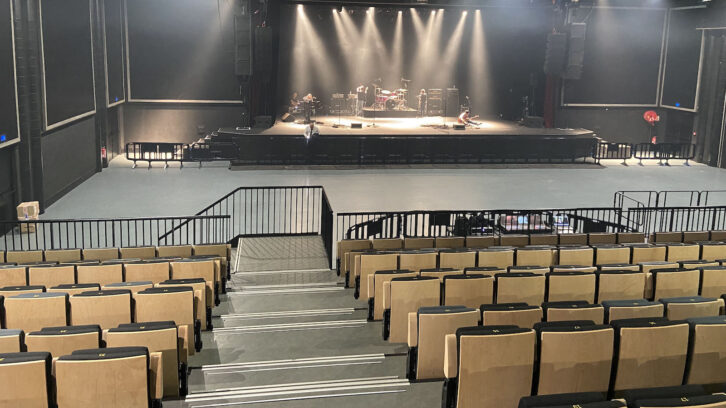
Looking around the room, I noticed that almost all of the wall surfaces had acoustic panels mounted on them, including the walls behind the P.A. hang (which is a rarity). These were slotted, noise reduction-type panels approximately four inches deep with absorption behind the face, reaching from above the doorways almost to the ceiling.
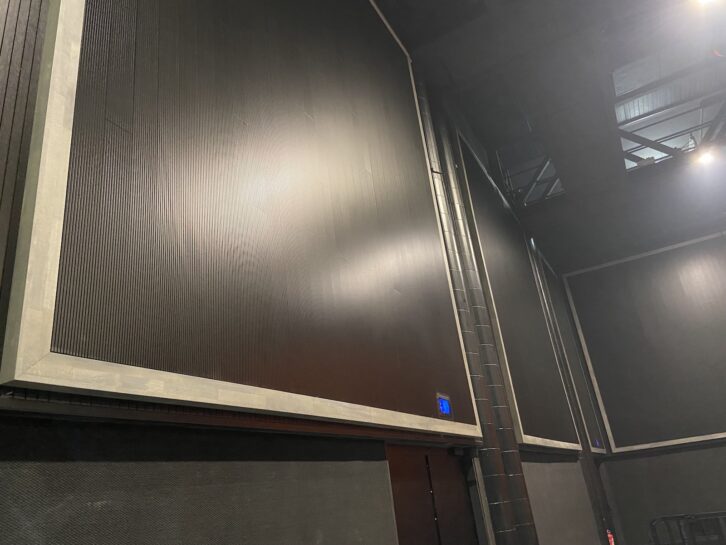
The panels reduce the reverb time to a very manageable level—I’d say less than a second. In spite of the size of the room, it was dry. At sound check, I was cautiously optimistic that the room would sound good for the show. During the show, I couldn’t believe my ears: it was like mixing on a big set of studio monitors. When I added reverb to the snare drum, I could hear the artificial reverb distinct from the room sound, whereas those sounds often just mush together. Localization of instruments in the P.A. was precise, and when I added a stereo delay to a lead vocal, I could clearly hear the difference in delay times between the left and right channels.
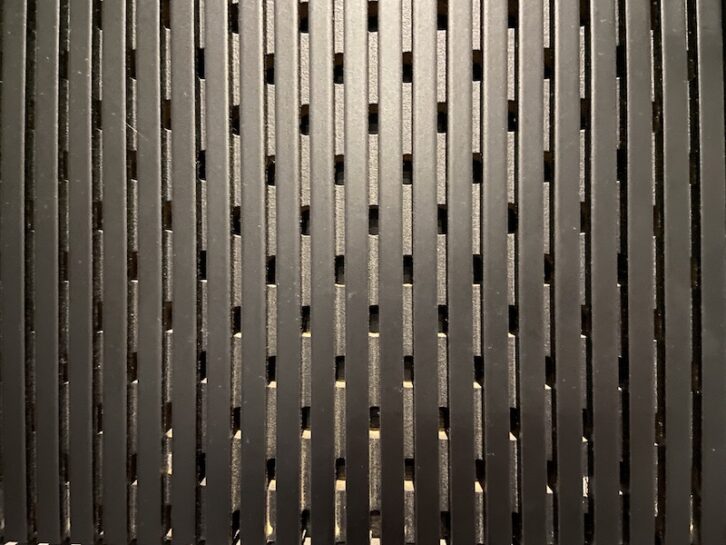
I later learned that Le Radiant is a multi-purpose venue that’s also used for theater, dance and comedy, and was designed to be acoustically neutral. A series of speakers deployed around the sides of the room form part of an artificial reverb system that can be used to create the illusion of a larger space for productions with that requirement. It’s one of the best-sounding rooms I’ve ever played. If you ever find yourself in the area (near Lyon), make a point of seeing a show there.
